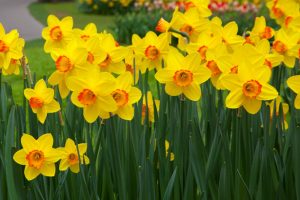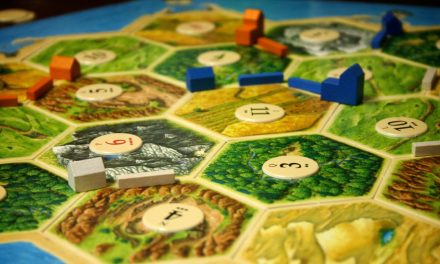For the past several weeks the University of Cincinnati has had the pleasure of hosting Claudia Emerson, Pulitzer Prize winner and author of, most recently, Secure the Shadow (LSU, Southern Messenger Poets, 2012), as Elliston Poet-in-Residence. This past Friday Claudia gave a talk on the importance of measured syntax, during which she described her unusual writing process: She spools out sentences in paragraph form and then prunes them into what become the lines of her poems.
 This so piqued our interest, we decided to honor Claudia’s process—which we’ve termed The Emerson Method—in our game of the month. The game’s also an homage to spring. And to the daffodil, the first flower to rear its head in Cincinnati every year.
This so piqued our interest, we decided to honor Claudia’s process—which we’ve termed The Emerson Method—in our game of the month. The game’s also an homage to spring. And to the daffodil, the first flower to rear its head in Cincinnati every year.
So: We’ve provided some facts about the daffodil below. Channel your inner Dickinson or Wordsworth by making the following technical information—well, pretty. Prune sentences (pun intended), change words, add words, rearrange phrases—really, do whatever you want; we’re flexible—to make a stanza, haiku, or piece of microfiction. Form and word count is up to you. The writer of the best entry will win his or her choice of free back issue, slingpack, or CR thermos. And, as a special bonus, we’ll also publish the winning entry on Twitter.
Click on the post’s title to leave your entry as a comment. Good luck!
Daffodils: Species information (from kew.org).
Scientific name: Narcissus pseudonarcissus L.
Common name(s): daffodil, common daffodil, wild daffodil, Easter lily, Lent lily, downdilly.
Conservation status: Locally abundant and not considered to be threatened.
Habitat: Woodlands, coppices, open meadows and grassy slopes.
Known hazards: The leaves, stems, seed pods and bulbs contain toxic alkaloids. If eaten they can cause dizziness, abdominal pain, diarrhea and occasionally also convulsions. The toxins are usually most concentrated in the bulbs. Rather surprisingly, daffodil bulbs have been eaten on occasion after being mistaken for onions. The sap can cause dermatitis, and the leaves are poisonous to livestock.
About this species: This well-known European flower brings bright swathes of color to woods and grassland in early spring. Although the daffodil is sometimes known as the Easter lily, it is actually a member of the Amaryllidaceae (the plant family that also includes snowdrops) and hence is not a true lily.
The Latin name for daffodil is thought to have been inspired by Narcissus, who was a figure in Greek mythology said to have fallen in love with his reflection in a pool of water. The nodding head of the daffodil is said to represent Narcissus bending down and gazing at his reflection. Daffodils suffered a rapid decline in England and Wales in the mid 19th century, and are now considered rare in some areas, although they are often still abundant in areas where they remain.









